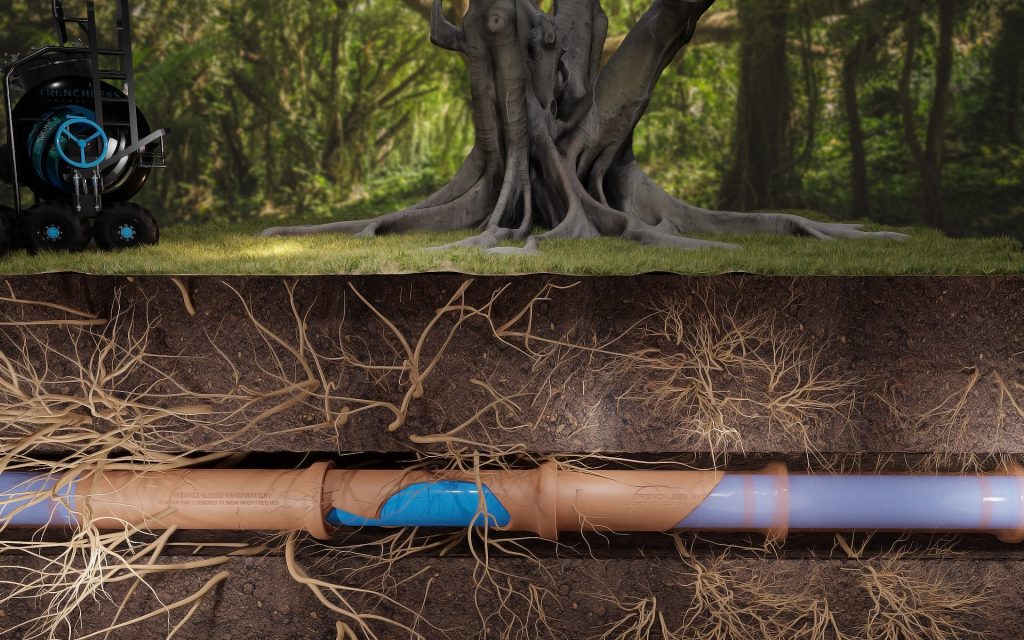How Trenchless Sewer Repair Works
-
Cured-In-Place-Pipe Lining (CIPP)
CIPP involves inserting a flexible liner inside the existing host pipe, inflating the liner, and exposing it to heat or ultraviolet light to "cure," or harden, the liner inside the pipe. The new, cured liner essentially forms a smooth surface inside the existing host pipe, restoring it to near-new condition. -
Spray Lining and Brush Coating
This trenchless technique is similar to structural pipe lining. However, instead of using a felt liner to create a new inner pipe, an epoxy or flexible polymer is sprayed or brushed onto the inside of the damaged pipe. -
Pipe Bursting
The pipe bursting process uses the infrastructure that already exists underground in the sewer lines. The pipe bursting equipment acts as a guide for installing the new pipes with little to no disturbance of the surrounding ground. The existing host pipe is replaced with either a pneumatic hammer or a static pulling head. The old host pipe is broken up and shifts outward into the surrounding soil. The space this old pipe used to inhabit is then filled by the new pipe. -
Sliplining
Slip lining has been used since the 1940s and involves inserting a smaller diameter pipe into the damaged one and then filling the area around it with grout. Although slip lining is considered a trenchless technique, it’s more invasive and labor intensive than the above-mentioned techniques. This is because a bigger pit needs to be dug in order to lower the new inner replacement pipe sections.


